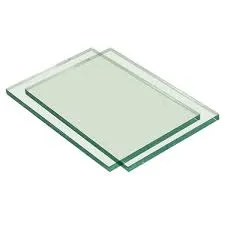Understanding Silver Mirrors A Blend of Science and Art
Silver mirrors have fascinated humanity for centuries, serving both functional and aesthetic purposes. But what exactly is a silver mirror, and how does it differ from other types of mirrors? In this article, we will explore the characteristics, production methods, and applications of silver mirrors, revealing their unique appeal.
Defining Silver Mirrors
A silver mirror is primarily made from a thin layer of silver deposited on a glass surface. This construction contributes to its reflective properties, allowing it to reflect light with exceptional clarity and brilliance. The high reflectivity of silver makes it one of the preferred materials for mirrors, especially in settings where high-quality reflection is required, such as in bathrooms, dressing rooms, and art installations.
Production Process
Creating a silver mirror involves a meticulous process. Initially, a clear piece of glass is prepared and cleaned thoroughly to remove any contaminants that could affect the adhesion of the silver. There are various methods to deposit the silver on glass, but the most common technique is known as the silvering process. This process typically involves the following steps
1. Cleaning The glass is cleaned using solvents and abrasives to ensure a pristine surface.
2. Silver Application A solution containing silver nitrate is applied to the glass. When combined with a reducing agent, usually glucose or similar compounds, it results in the deposition of metallic silver onto the glass surface.
3. Protective Coating Once the silver layer is in place, it is often coated with a protective layer of paint or varnish to prevent tarnishing and enhance durability.
This meticulous process is primarily why silver mirrors are often associated with high-quality craftsmanship.
what is a silver mirror
Benefits of Using Silver Mirrors
Silver mirrors offer several advantages over their counterparts made from other materials. One of the most significant benefits is their superior reflective quality. Silver has the highest optical reflectivity of any metal, which means that images reflected in silver mirrors appear clearer and brighter.
Another advantage is their durability. When properly coated, silver mirrors resist corrosion and tarnishing, allowing them to maintain their shine and clarity over time. They are also lightweight compared to traditional glass mirrors, making them easier to install and handle.
Applications in Various Fields
The use of silver mirrors extends beyond the average household mirror. In the world of science, they are commonly found in telescopes and optical instruments due to their ability to reflect light efficiently. In art, many artists employ silver mirrors in their installations, playing with reflections and creating immersive experiences.
In the realm of design, silver mirrors are a staple in interior decorating. They add a touch of elegance and sophistication to spaces. Whether in a minimalist décor or luxurious surroundings, silver mirrors can enhance the visual appeal of any room. Their ability to create the illusion of space by reflecting light also makes them a popular choice in smaller rooms where maximizing the sense of space is essential.
Conclusion
Silver mirrors are more than just simple reflective surfaces; they are a fusion of science, craftsmanship, and beauty. With their unparalleled reflectivity, durability, and diverse applications, silver mirrors continue to play a vital role in both functional and artistic domains. Whether used in everyday life or specialized fields, these mirrors undoubtedly enhance our interaction with space and light, making them timeless objects of fascination. As we continue to innovate and discover new applications for silver mirrors, their significance in our lives remains ever relevant.
 Afrikaans
Afrikaans  Albanian
Albanian  Amharic
Amharic  Arabic
Arabic  Armenian
Armenian  Azerbaijani
Azerbaijani  Basque
Basque  Belarusian
Belarusian  Bengali
Bengali  Bosnian
Bosnian  Bulgarian
Bulgarian  Catalan
Catalan  Cebuano
Cebuano  Corsican
Corsican  Croatian
Croatian  Czech
Czech  Danish
Danish  Dutch
Dutch  English
English  Esperanto
Esperanto  Estonian
Estonian  Finnish
Finnish  French
French  Frisian
Frisian  Galician
Galician  Georgian
Georgian  German
German  Greek
Greek  Gujarati
Gujarati  Haitian Creole
Haitian Creole  hausa
hausa  hawaiian
hawaiian  Hebrew
Hebrew  Hindi
Hindi  Miao
Miao  Hungarian
Hungarian  Icelandic
Icelandic  igbo
igbo  Indonesian
Indonesian  irish
irish  Italian
Italian  Japanese
Japanese  Javanese
Javanese  Kannada
Kannada  kazakh
kazakh  Khmer
Khmer  Rwandese
Rwandese  Korean
Korean  Kurdish
Kurdish  Kyrgyz
Kyrgyz  Lao
Lao  Latin
Latin  Latvian
Latvian  Lithuanian
Lithuanian  Luxembourgish
Luxembourgish  Macedonian
Macedonian  Malgashi
Malgashi  Malay
Malay  Malayalam
Malayalam  Maltese
Maltese  Maori
Maori  Marathi
Marathi  Mongolian
Mongolian  Myanmar
Myanmar  Nepali
Nepali  Norwegian
Norwegian  Norwegian
Norwegian  Occitan
Occitan  Pashto
Pashto  Persian
Persian  Polish
Polish  Portuguese
Portuguese  Punjabi
Punjabi  Romanian
Romanian  Russian
Russian  Samoan
Samoan  Scottish Gaelic
Scottish Gaelic  Serbian
Serbian  Sesotho
Sesotho  Shona
Shona  Sindhi
Sindhi  Sinhala
Sinhala  Slovak
Slovak  Slovenian
Slovenian  Somali
Somali  Spanish
Spanish  Sundanese
Sundanese  Swahili
Swahili  Swedish
Swedish  Tagalog
Tagalog  Tajik
Tajik  Tamil
Tamil  Tatar
Tatar  Telugu
Telugu  Thai
Thai  Turkish
Turkish  Turkmen
Turkmen  Ukrainian
Ukrainian  Urdu
Urdu  Uighur
Uighur  Uzbek
Uzbek  Vietnamese
Vietnamese  Welsh
Welsh  Bantu
Bantu  Yiddish
Yiddish  Yoruba
Yoruba  Zulu
Zulu 

